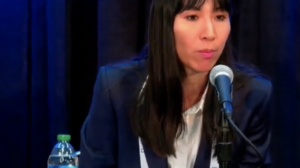NEW YORK (Reuters Health) – The investigational GLP-1 receptor antagonist lixisenatide significantly reduces postprandial glucose excursions and HbA1c in patients with type 2 diabetes who have not been treated with any other glucose-lowering agent, researchers report in Diabetes Care online March 19.
“No other placebo-controlled studies are available for GLP-1 receptor agonist monotherapy in a similar patient population,” note Dr. Vivian A. Fonseca, with Tulane University Health Sciences Center in New Orleans, Louisiana, and colleagues.
They point out that, while two other GLP-1 receptor agonist — exenatide and liraglutide — are currently available, lixisenatide is highly selective for the GLP-1 receptor, and stimulation of insulin secretion with lixisenatide depends “strictly” on glucose levels.
In the current randomized double-blind, 12-week study, 361 drug-naive patients with type 2 diabetes and HbA1c levels between 7% and 10% were assigned to once-daily subcutaneous lixisenatide regimens that increased in dosage in two steps (10 mcg for1 week, 15 mcg for 1 week, and then 20 mcg) or in one step (10 mcg for 2 weeks and then 20 mg) or to similar placebo regimens.
The proportion of patients achieving an HbA1c <7% in the two lixisenatide groups was 52.2% and 46.5%, respectively, compared with 26.8% among those in the combined placebo groups. An HbA1c of 6.5% or less was achieved by 31.9%, 25.4% and 12.5% of the three arms, respectively, the investigators report. They also found that, after 12 weeks of treatment, the changes in 2-hour postprandial glucose levels compared to baseline were -4.51 mmol/L and -5.47 mmol/L in the 2- and 1-step lixisenatide groups compared with just -0.65 mmol/L with placebo. A mean weight decrease of about 2 kg was seen in all groups, indicating that the glucose-lowering effects of lixisenatide were not attributable to weight loss, the authors note. As for safety, rates of symptomatic hypoglycemia were 1.7% in the lixisenatide groups and 1.6% in the placebo arms. GI side effects were relatively high with lixisenatide, with nausea being the most frequent – 23% with lixisenatide versus 4.1% with placebo. Dr. Fonseca and colleagues conclude, “The results support a role for once-daily lixisenatide monotherapy using a 1-step dose increase regimen in patients not controlled on lifestyle interventions and highlight the potential of lixisenatide for further development as a glucose-lowering compound to treat patients with type 2 diabetes.” SOURCE: Diabetes Care 2012.




